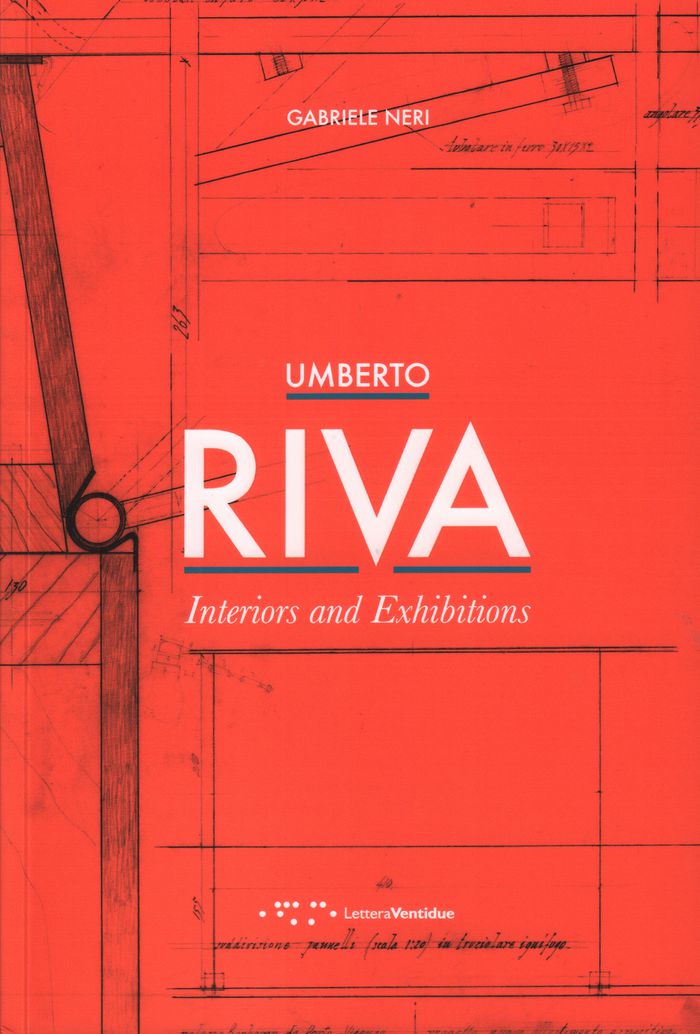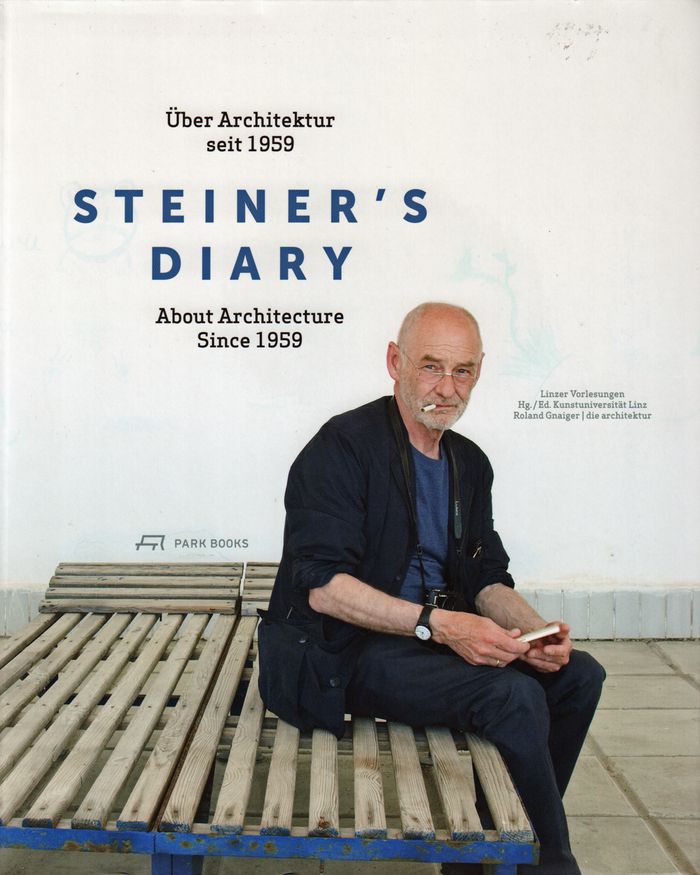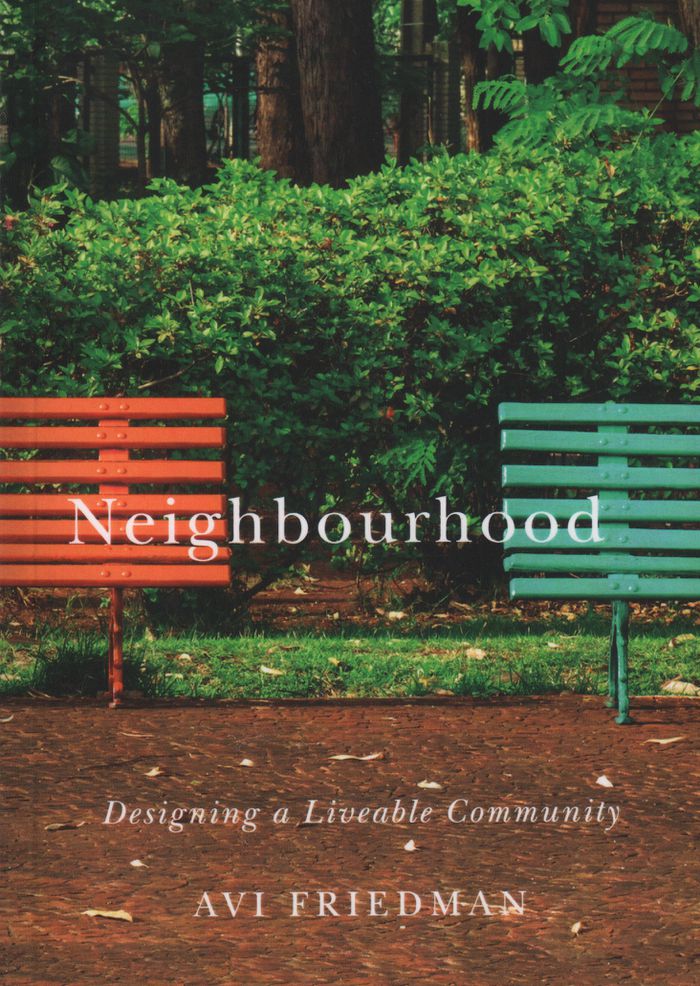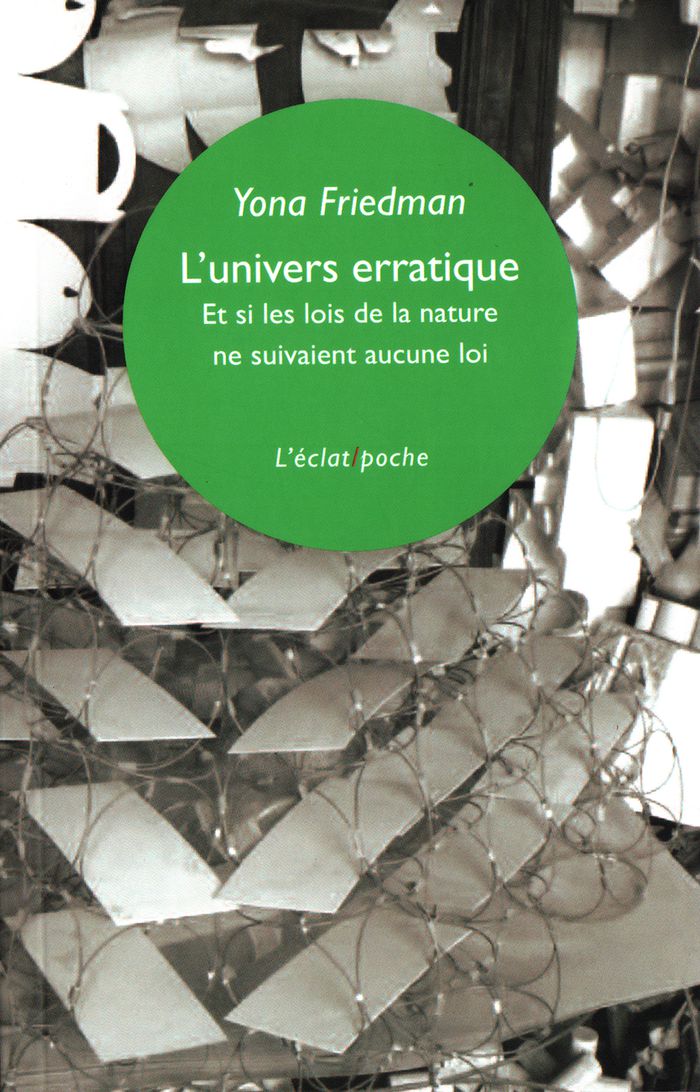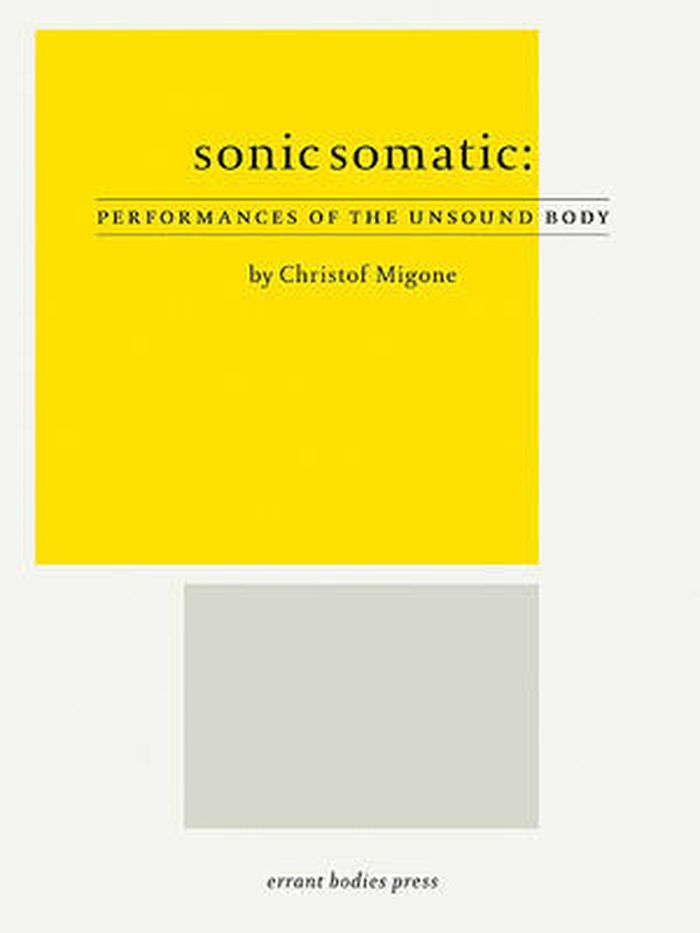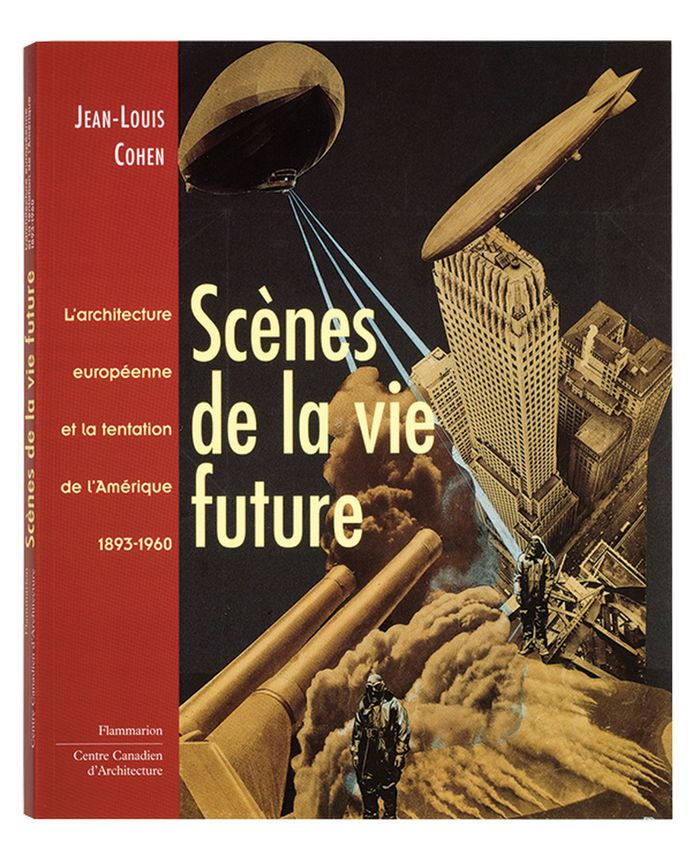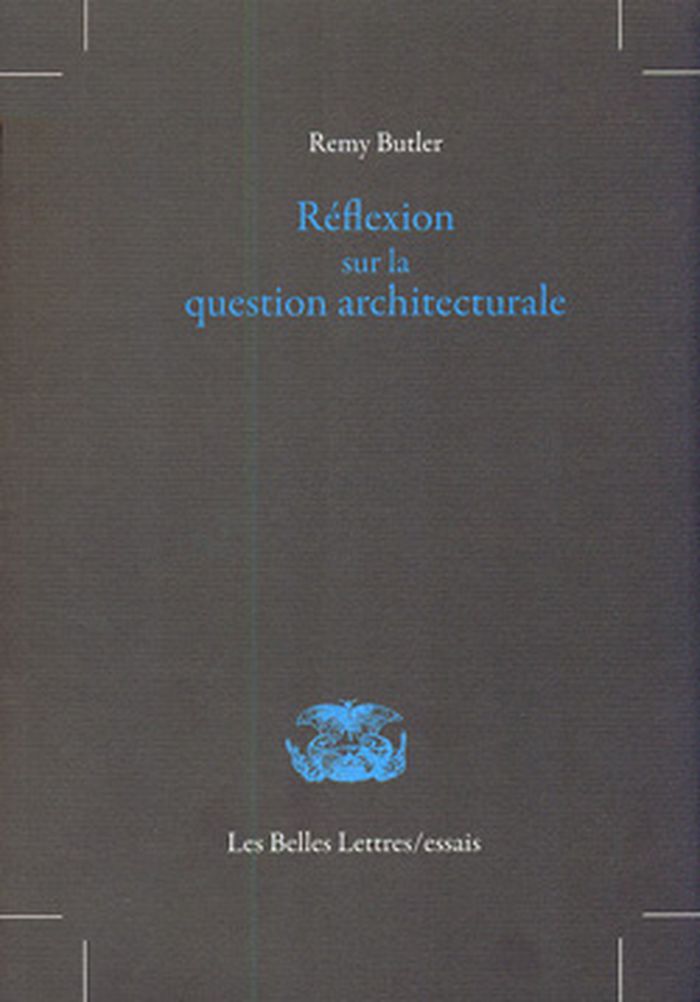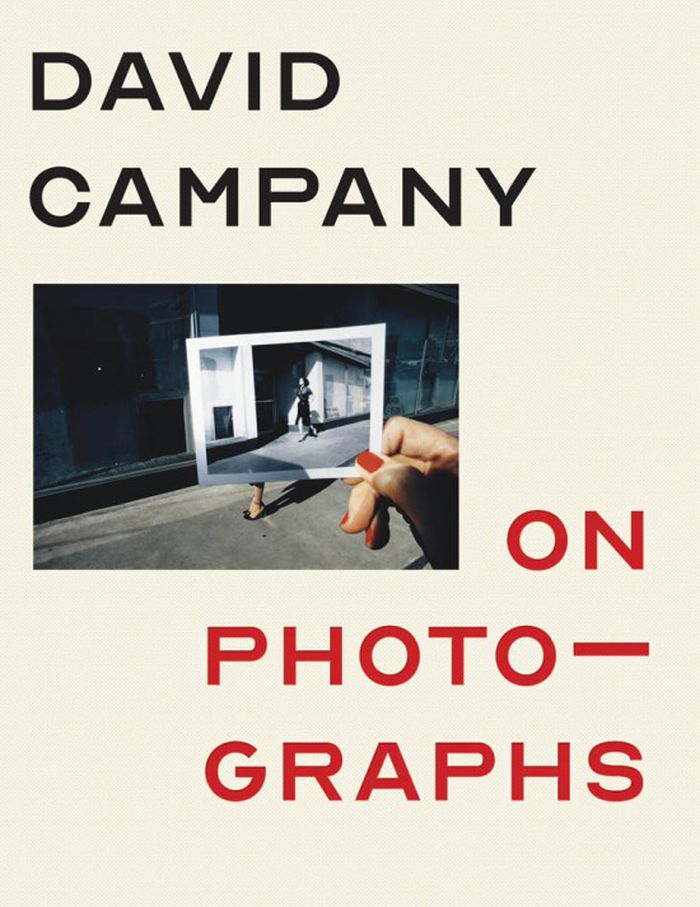$54.95
(disponible sur commande)
Résumé:
The architecture of Umberto Riva (1928-2021) has, over the span 60 years, distinguished itself by its stimulating complexity. This monograph analyzes, for the first time in a chronologically extended form, his work in the field of interiors and exhibitions; fundamental areas of investigation for the Milanese architect. In domestic spaces in contact with nature, in city(...)
Umberto Riva: Interiors and exhibitions
Actions:
Prix:
$54.95
(disponible sur commande)
Résumé:
The architecture of Umberto Riva (1928-2021) has, over the span 60 years, distinguished itself by its stimulating complexity. This monograph analyzes, for the first time in a chronologically extended form, his work in the field of interiors and exhibitions; fundamental areas of investigation for the Milanese architect. In domestic spaces in contact with nature, in city apartments or in public places, the restless and radical character of Riva's work emerges, in which the search for form brings with it a more intimate reflection on living. In the field of displays, the architect instead stages a complex relationship between the works on display, the curatorial narrative and the museum space, proving to be one of the best heirs and a continuation of the Italian museological revolution of the twentieth century.
Architecture, monographies
$68.95
(disponible sur commande)
Résumé:
This publication includes lectures; interviews; articles published in daily newspapers and magazines, and longer essays on a variety of topics. Steiner brings to his work a keen critical acumen that draws on decades of travel, research, and contact with renowned international architects, such as Rob Krier, Hermann Czech, Herzog & de Meuron, Rem Koolhaas, Lacaton + Vassal,(...)
Steiner's Diary: on architecture since 1959
Actions:
Prix:
$68.95
(disponible sur commande)
Résumé:
This publication includes lectures; interviews; articles published in daily newspapers and magazines, and longer essays on a variety of topics. Steiner brings to his work a keen critical acumen that draws on decades of travel, research, and contact with renowned international architects, such as Rob Krier, Hermann Czech, Herzog & de Meuron, Rem Koolhaas, Lacaton + Vassal, Jon Jerde, Rural Studio, Wang Shu, and Alexander Brodsky. At the same time, his articles and essays are often amplified by personal observations and experiences. While paying tribute to a prolific scholar and critic, Steiner’s Diary takes readers through four decades of architectural history that represent some of the discipline’s most fascinating historical developments, and it will be welcomed by architects, architectural historians, and anyone with an interest in architecture’s role in society today.
Théorie de l’architecture
$25.00
(disponible sur commande)
Résumé:
In "Neighbourhood: Designing a Liveable Community", renowned architect, professor and urban planner Avi Friedman describes the planning of a new neighbourhood in Middlesex Centre, a rural municipality in southern Ontario. Friedman explores how good and bad design affect our homes and civic life. In his quest to build a new kind of neighbourhood, Friedman talks about(...)
Neighbourhood: designing a livable community
Actions:
Prix:
$25.00
(disponible sur commande)
Résumé:
In "Neighbourhood: Designing a Liveable Community", renowned architect, professor and urban planner Avi Friedman describes the planning of a new neighbourhood in Middlesex Centre, a rural municipality in southern Ontario. Friedman explores how good and bad design affect our homes and civic life. In his quest to build a new kind of neighbourhood, Friedman talks about personal architectural and community touchstones that have informed his work through the years. Over the past decade or more, worrisome signs—climate change, depletion of natural resources, unrelenting urban sprawl, the tyranny of the automobile, the decline of face-to-face human contact—have motivated us to radically rethink home and community design. In Avi Friedman’s view, these issues have combined to force us to question fundamental practices and come up with better solutions.
Théorie de l’urbanisme
$14.95
(disponible sur commande)
Résumé:
Paru en 1994 aux PUF, « L'univers erratique » montre un aspect de l’oeuvre de Friedman qui va chercher dans le fonctionnement de l'univers, « l'image » du monde tel qu'il l'a vue mise en acte dans son travail d'architecte au contact d'une population qui décide de sa manière d'habiter le monde. Dans la préface à cette édition, Friedman écrit: « Je relis ce livre, ce qui(...)
L'univers erratique : et si les lois de la nature ne suivaient aucune loi
Actions:
Prix:
$14.95
(disponible sur commande)
Résumé:
Paru en 1994 aux PUF, « L'univers erratique » montre un aspect de l’oeuvre de Friedman qui va chercher dans le fonctionnement de l'univers, « l'image » du monde tel qu'il l'a vue mise en acte dans son travail d'architecte au contact d'une population qui décide de sa manière d'habiter le monde. Dans la préface à cette édition, Friedman écrit: « Je relis ce livre, ce qui n’est pas mon habitude. J’y retrouve une « image du monde » qui était, et est encore, la mienne depuis les années 60 du siècle passé. Elle est parallèle à la découverte, en tant qu’architecte, que le comportement des gens, dans leur manière d’habiter (et de concevoir) la maison qu’ils auraient préférée, est « erratique », imprévisible et informulable.» Et c'est cette erraticité qui sert de modèle à une vie menée « sans entraves ».
Théorie/ philosophie
$27.95
(disponible sur commande)
Résumé:
Great photographs change the way we see the world; The Ongoing Moment changes the way we look at both. With characteristic perversity and trademark originality -The Ongoing Moment is Dyer's unique and idiosyncratic history of photography. Seeking to identify their signature styles Dyer looks at the ways that canonical figures such as Alfred Stieglitz, Paul Strand, Walker(...)
The ongoing moment: a book about photographs
Actions:
Prix:
$27.95
(disponible sur commande)
Résumé:
Great photographs change the way we see the world; The Ongoing Moment changes the way we look at both. With characteristic perversity and trademark originality -The Ongoing Moment is Dyer's unique and idiosyncratic history of photography. Seeking to identify their signature styles Dyer looks at the ways that canonical figures such as Alfred Stieglitz, Paul Strand, Walker Evans, Kertesz, Dorothea Lange, Diane Arbus and William Eggleston have photographed the same scenes and objects (benches, hats, hands, roads). In doing so Dyer constructs a narrative in which those photographers - many of whom never met in their lives - constantly come into contact with each other. It is the most ambitious example to date of a form of writing that Dyer has made his own: the non-fiction work of art.
Théorie de la photographie
$34.95
(disponible sur commande)
Résumé:
Just as the Canada's rich past resists any singular narrative, there is no such thing as a singular Canadian food tradition. This new book explores Canada's diverse food cultures and the varied relationships that Canadians have had historically with food practices in the context of community, region, nation and beyond. Based on findings from menus, cookbooks,(...)
Edible histories, cultural politics : towards a Canadian food history
Actions:
Prix:
$34.95
(disponible sur commande)
Résumé:
Just as the Canada's rich past resists any singular narrative, there is no such thing as a singular Canadian food tradition. This new book explores Canada's diverse food cultures and the varied relationships that Canadians have had historically with food practices in the context of community, region, nation and beyond. Based on findings from menus, cookbooks, government documents, advertisements, media sources, oral histories, memoirs, and archival collections, Edible Histories offers a veritable feast of original research on Canada's food history and its relationship to culture and politics. This exciting collection explores a wide variety of topics, including urban restaurant culture, ethnic cuisines, and the controversial history of margarine in Canada. It also covers a broad time-span, from early contact between European settlers and First Nations through the end of the twentieth century.
Bouffe
$25.00
(disponible sur commande)
Résumé:
In Sonic Somatic, the sound artist and theorist Christof Migone looks at sound art's overlap with other disciplines through its particular uses of articulation. Articulation is explored here in all of its guises: its negation as silence, its interruption in stuttering and its somatic ramifications in the human body. Migone looks at French playwright and poet Antonin(...)
Sonic somatic: performances of the unsound body
Actions:
Prix:
$25.00
(disponible sur commande)
Résumé:
In Sonic Somatic, the sound artist and theorist Christof Migone looks at sound art's overlap with other disciplines through its particular uses of articulation. Articulation is explored here in all of its guises: its negation as silence, its interruption in stuttering and its somatic ramifications in the human body. Migone looks at French playwright and poet Antonin Artaud's writings, with their implications of strangled speech and glossolalia; American composer Alvin Lucier's groundbreaking 1969 recording “I Am Sitting in a Room”; Erik Satie's looped composition “Vexations”; Marina Abramovic's confrontational performance “Rhythm 0”; Adrian Piper's “Untitled Performance for Max's Kansas City”; Herman Melville's short story “Bartleby, the Scrivener”; Bob Connolly and Robin Anderson's documentary film First Contact; and of course the work that most looms over this topic: John Cage's paradigm-shifting 1952 composition “4'33” .”
Acoustique
$49.95
(disponible en magasin)
Résumé:
Publié à l'occasion de l'exposition homonyme présentée par le CCA au cours de l'été 1995, le présent ouvrage analyse les structures globales et les stratégies thématiques selon lesquelles les types et les formes de l'architecture et de l'urbanisme américains migrent vers le Vieux Monde, apportant les promesses d'une architecture nouvelle et, déjà, la(...)
Scènes de la vie future : l'architecture européenne et la tentation de l'Amérique 1893-1960
Actions:
Prix:
$49.95
(disponible en magasin)
Résumé:
Publié à l'occasion de l'exposition homonyme présentée par le CCA au cours de l'été 1995, le présent ouvrage analyse les structures globales et les stratégies thématiques selon lesquelles les types et les formes de l'architecture et de l'urbanisme américains migrent vers le Vieux Monde, apportant les promesses d'une architecture nouvelle et, déjà, la menace d'une dissolution de l'identité européenne. Ainsi en va-t-il du modèle de l'usine taylorisée ou, bien entendu, de celui du gratte-ciel, que chaque courant architectural s'appropriera. Le propos retrace l'assimilation des démarches américaines par l'Allemagne, où se fonde l'urbanisme, par l'Italie du futurisme et du fascisme, par la France, où l'hégémonie des Beaux-Arts vacille au contact de l'Amérique, par la Russie des avant-gardes et de la réaction culturelle stalinienne et par l'Angleterre d'après 1945.
Publications du CCA
$39.95
(disponible sur commande)
Résumé:
Qu'est-ce que l'art architectural ? La plupart des ouvrages de théorie de l'architecture n'émanent pas d'architectes, mais de chercheurs ou de critiques réputés qui pratiquent un autre métier, comme l'anthropologue Françoise Choay. Lorsqu'ils sont architectes, les auteurs produisent davantage des livres de recettes autobiographiques que des essais de réflexion théorique.(...)
Réflexion sur la question architecturale
Actions:
Prix:
$39.95
(disponible sur commande)
Résumé:
Qu'est-ce que l'art architectural ? La plupart des ouvrages de théorie de l'architecture n'émanent pas d'architectes, mais de chercheurs ou de critiques réputés qui pratiquent un autre métier, comme l'anthropologue Françoise Choay. Lorsqu'ils sont architectes, les auteurs produisent davantage des livres de recettes autobiographiques que des essais de réflexion théorique. Le statut de Rémy Butler est donc assez atypique. Son questionnement, développé pendant des décennies au contact de générations d'élèves, est alimenté par une ample connaissance de la pratique. Sa méthode, originale, consiste à interroger quelques termes constamment utilisés pour la qualifier : échelle, rythme, ornement, composition... pour dessiner la valeur symbolique de l'architecture, de Vitruve à nos jours. Humaniste, la réflexion, nourrie par des ouvrages de tous bords, s'échafaude au moyen de multiples références qui décloisonnent le champ de la réflexion architecturale classique.
Théorie de l’architecture
On photographs
$45.95
(disponible en magasin)
Résumé:
In ''On photographs,'' curator and writer David Campany presents an exploration of photography in 120 photographs. Proceeding not by chronology or genre or photographer, Campany’s eclectic selection unfolds according to its own logic. We see work by Henri Cartier-Bresson, William Eggleston, Helen Levitt, Garry Winogrand, Yves Louise Lawler, Andreas Gursky, and Rineke(...)
On photographs
Actions:
Prix:
$45.95
(disponible en magasin)
Résumé:
In ''On photographs,'' curator and writer David Campany presents an exploration of photography in 120 photographs. Proceeding not by chronology or genre or photographer, Campany’s eclectic selection unfolds according to its own logic. We see work by Henri Cartier-Bresson, William Eggleston, Helen Levitt, Garry Winogrand, Yves Louise Lawler, Andreas Gursky, and Rineke Dijkstra. There is fashion photography by William Klein, one of Vivian Maier’s contact sheets, and a carefully staged scene by Gregory Crewdson, as well as images culled from magazines and advertisements. Each of the 120 photographs is accompanied by Campany’s lucid and incisive commentary, considering the history of that image and its creator, interpreting its content and meaning, and connecting and contextualizing it with visual culture. Image by image, we absorb and appreciate Campany’s complex yet playful take on photography and its history.
Théorie de la photographie
